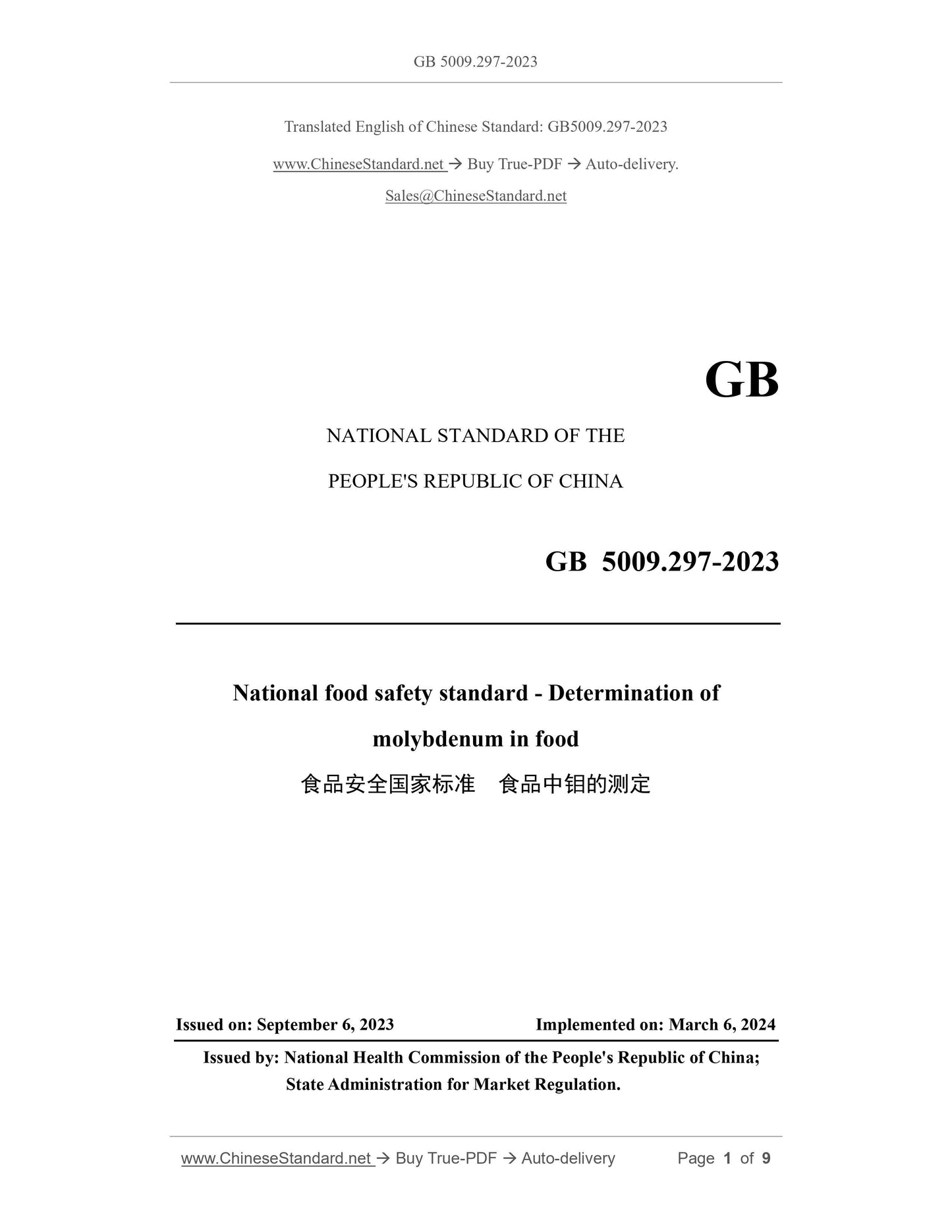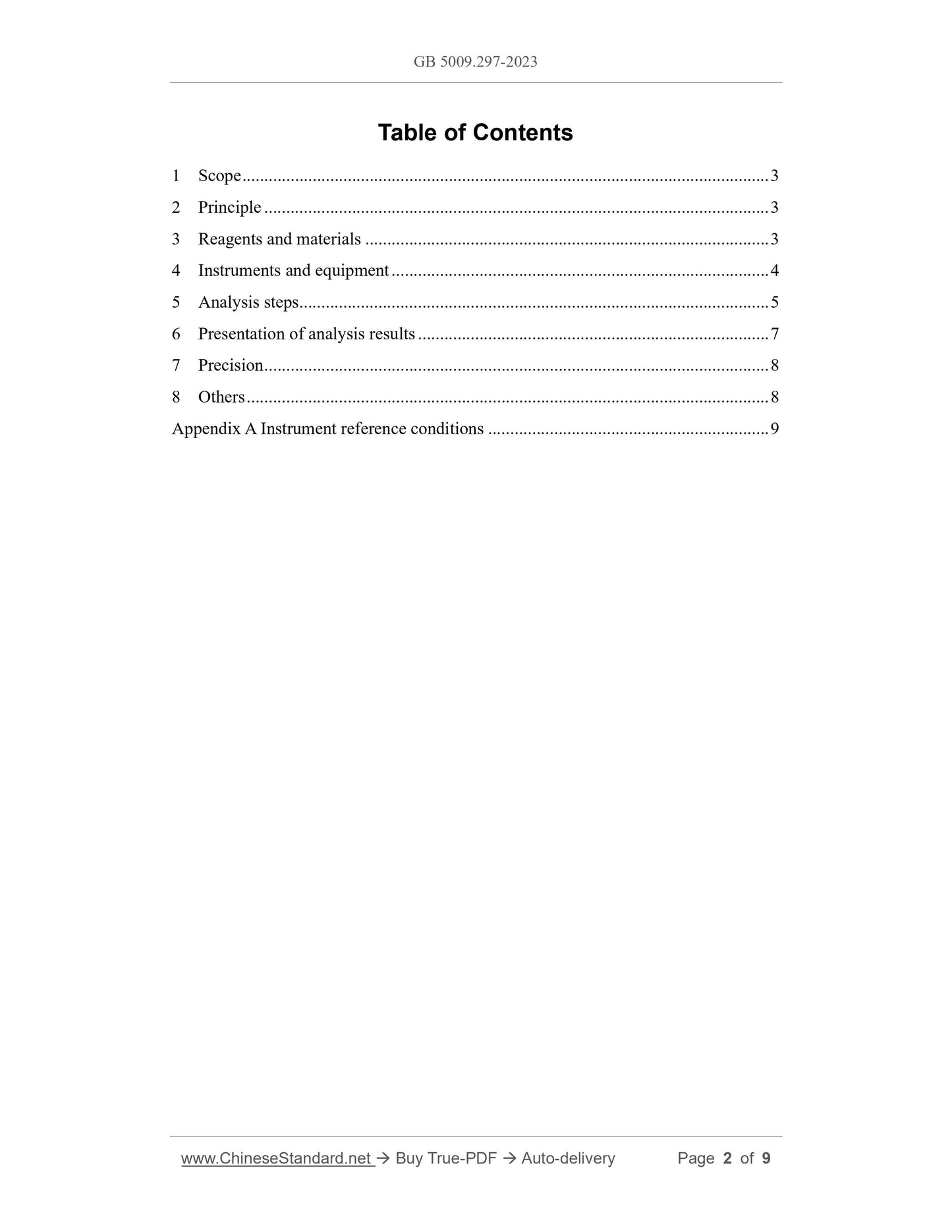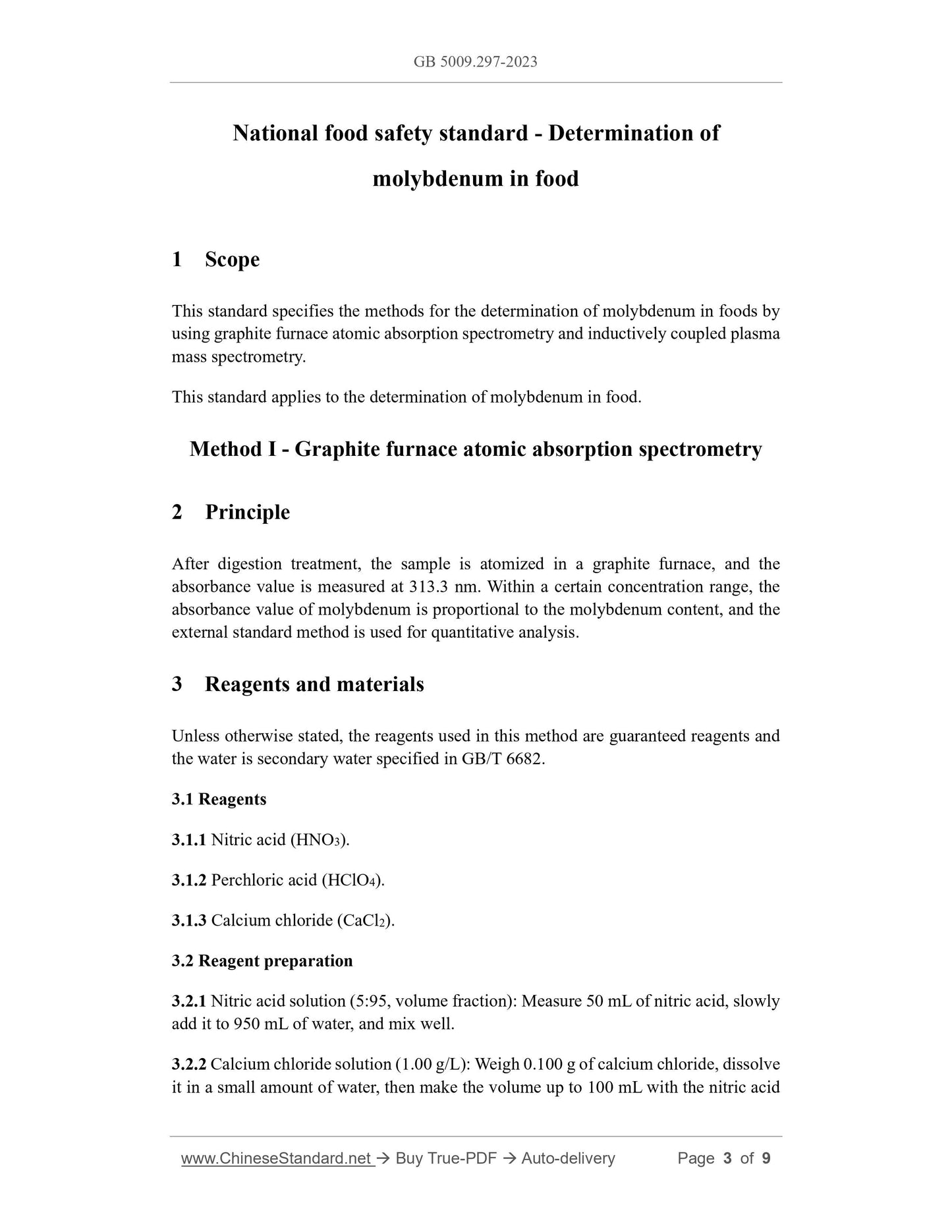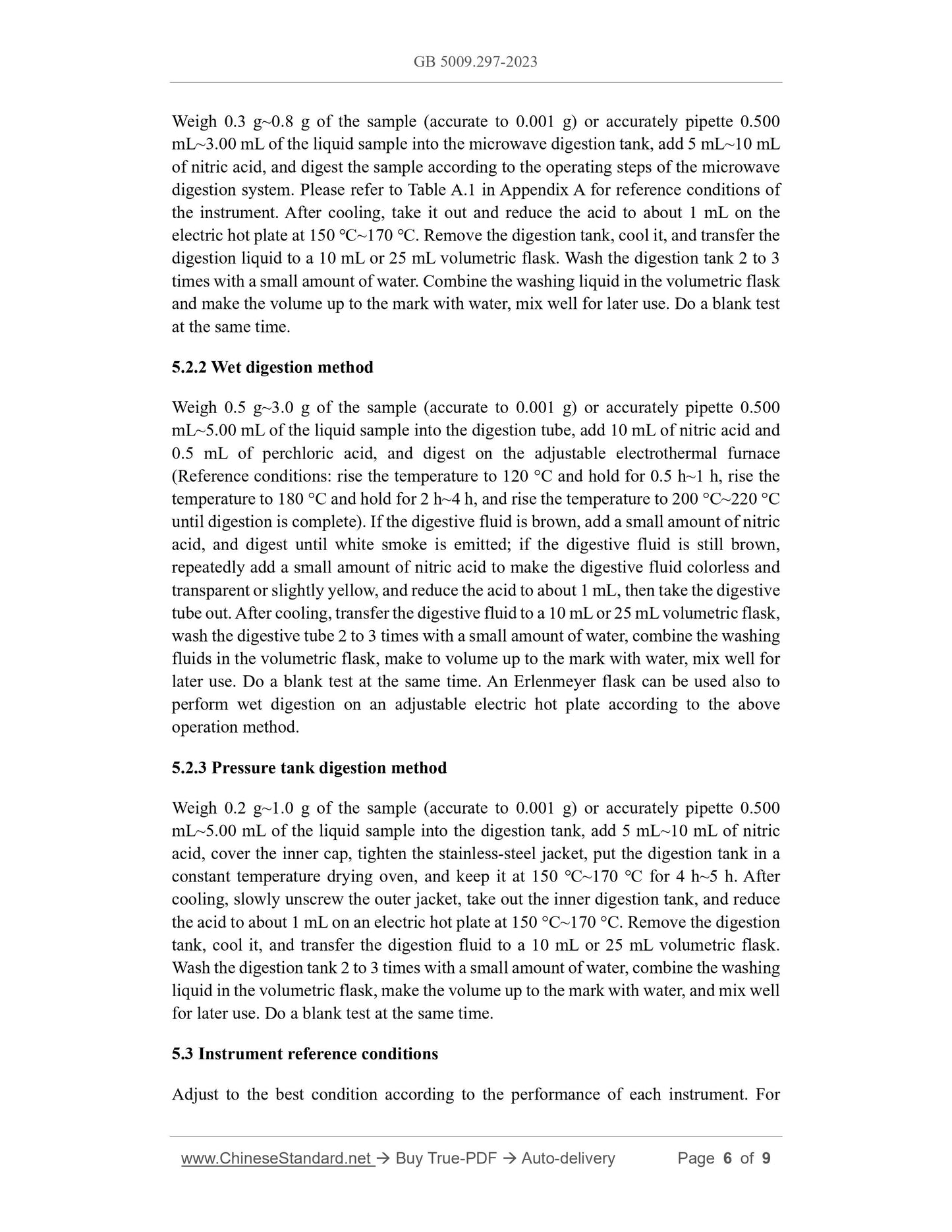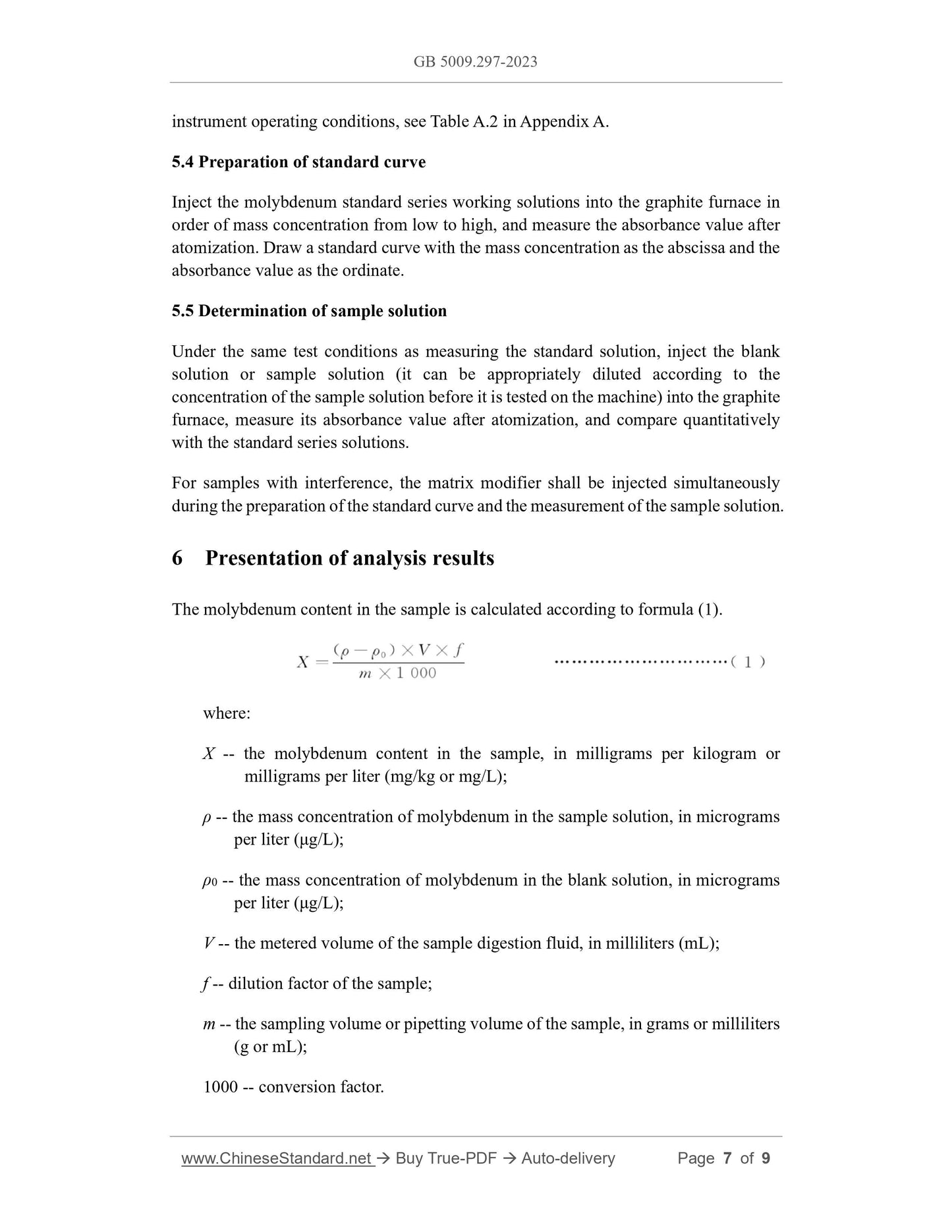1
/
of
6
www.ChineseStandard.us -- Field Test Asia Pte. Ltd.
GB 5009.297-2023 English PDF
GB 5009.297-2023 English PDF
Regular price
$140.00
Regular price
Sale price
$140.00
Unit price
/
per
Shipping calculated at checkout.
Couldn't load pickup availability
GB 5009.297-2023: National food safety standard - Determination of molybdenum in foods
Delivery: 9 seconds. Download (and Email) true-PDF + Invoice.Get Quotation: Click GB 5009.297-2023 (Self-service in 1-minute)
Newer / historical versions: GB 5009.297-2023
Preview True-PDF
Scope
This standard specifies the methods for the determination of molybdenum in foods byusing graphite furnace atomic absorption spectrometry and inductively coupled plasma
mass spectrometry.
This standard applies to the determination of molybdenum in food.
Method I - Graphite furnace atomic absorption spectrometry
Basic Data
| Standard ID | GB 5009.297-2023 (GB5009.297-2023) |
| Description (Translated English) | National food safety standard - Determination of lead in foods |
| Sector / Industry | National Standard |
| Classification of Chinese Standard | X09 |
| Word Count Estimation | 13,139 |
| Date of Issue | 2023-09-06 |
| Date of Implementation | 2024-03-06 |
| Issuing agency(ies) | National Health Commission of the People's Republic of China, State Administration for Market Regulation |
| Summary | This standard specifies the methods for the determination of lead in food by graphite furnace atomic absorption spectrometry, inductively coupled plasma mass spectrometry and flame atomic absorption spectrometry. This standard applies to the determination of lead in food. |
Share
